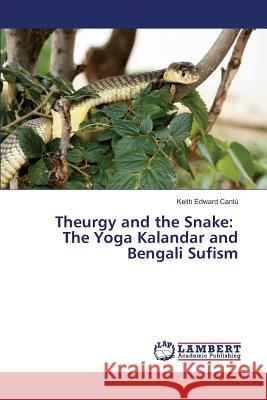Theurgy and the Snake: The Yoga Kalandar and Bengali Sufism » książka
Theurgy and the Snake: The Yoga Kalandar and Bengali Sufism
ISBN-13: 9783659711602 / Angielski / Miękka / 2015 / 96 str.
A radically alternative vision of the fakir is given in surviving medieval (Bng. madhya- ug, "Middle Age") and pre-modern textual sources that predate and coincide with the colonial period, such as the widely influential 17th century Yoga Kalandar text as well as B ul oral traditions deeply influenced by this text's cosmology. This book aims therefore to fulfill three key objectives: 1) to historically situate the Yoga Kalandar text and its practitioners; 2) to describe the distinctly yogic and tantric aspects of its theology, with specific reference to the way the text harmonizes Sufi and Neoplatonic hypostases and ritual theurgy with S khya cosmology; and 3) to describe how the text's cosmology was integrated in later colonial and modern forms of indigenous Bengali mystical poetry, especially the B ul songs of L lan Fakir that make numerous creative references to the practices outlined in the Yoga Kalandar and, in a sense, even transcend the text's limitations. As an appendix for reference, a new English simple translation of this text (from Bengali and French critical editions) is provided."
A radically alternative vision of the fakir is given in surviving medieval (Bng. madhya-ẏug, "Middle Age") and pre-modern textual sources that predate and coincide with the colonial period, such as the widely influential 17th century Yoga Kalandar text as well as Bāul oral traditions deeply influenced by this texts cosmology. This book aims therefore to fulfill three key objectives: 1) to historically situate the Yoga Kalandar text and its practitioners; 2) to describe the distinctly yogic and tantric aspects of its theology, with specific reference to the way the text harmonizes Sufi and Neoplatonic hypostases and ritual theurgy with Sāṃkhya cosmology; and 3) to describe how the texts cosmology was integrated in later colonial and modern forms of indigenous Bengali mystical poetry, especially the Bāul songs of Lālan Fakir that make numerous creative references to the practices outlined in the Yoga Kalandar and, in a sense, even transcend the texts limitations. As an appendix for reference, a new English simple translation of this text (from Bengali and French critical editions) is provided.











